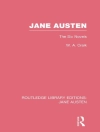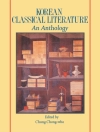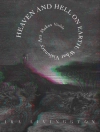Living on an island at the edge of the known world, the medieval Irish were in a unique position to examine the spaces of the North Atlantic region and contemplate how geography can shape a people. This book is the first full-length study of medieval Irish topographical writing. It situates the theories and poetics of Irish place – developed over six centuries in response to a variety of political, cultural, religious and economic changes – in the bigger theoretical picture of studies of space, landscape, environmental writing and postcolonial identity construction. Presenting focused studies of important literary texts by authors from Ireland and Britain, it shows how these discourses influenced European conceptions of place and identity, as well as understandings of how to write the world.
Innehållsförteckning
Introduction
1 Holy islands: transformative landscapes and the origins of an Irish spatial poetics
2 Place-making heroes and the storying of Ireland’s vernacular landscape
3 A versified Ireland: the Dindshenchas Érenn and a national poetics of space
4 National pilgrims: travelling a sanctified landscape with Saint Patrick
5 English topographies of Ireland’s conquest and conversion
Conclusion
Index
Om författaren
Dr Anke Bernau is Lecturer in Medieval Literature and Culture at the University of Manchester












